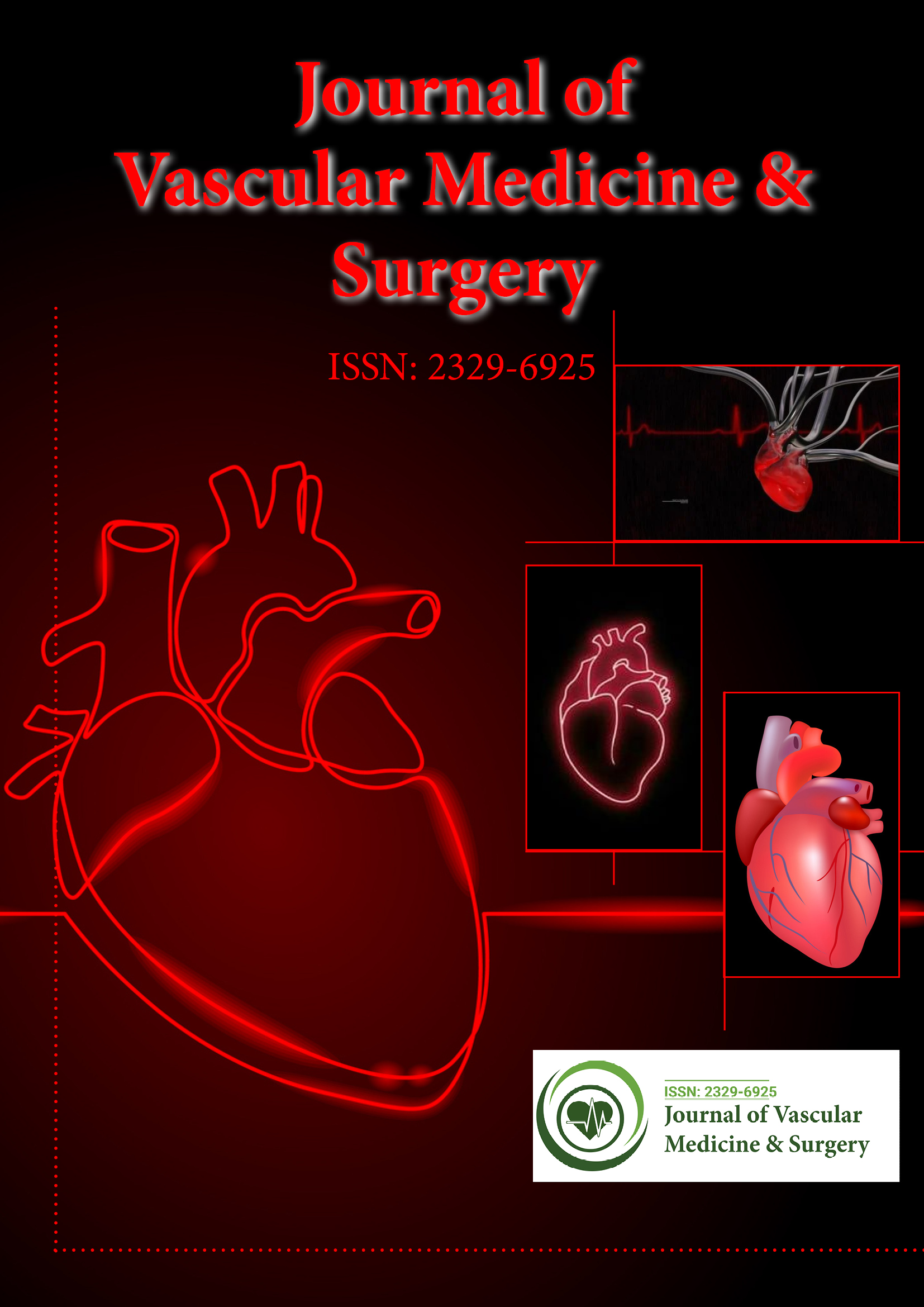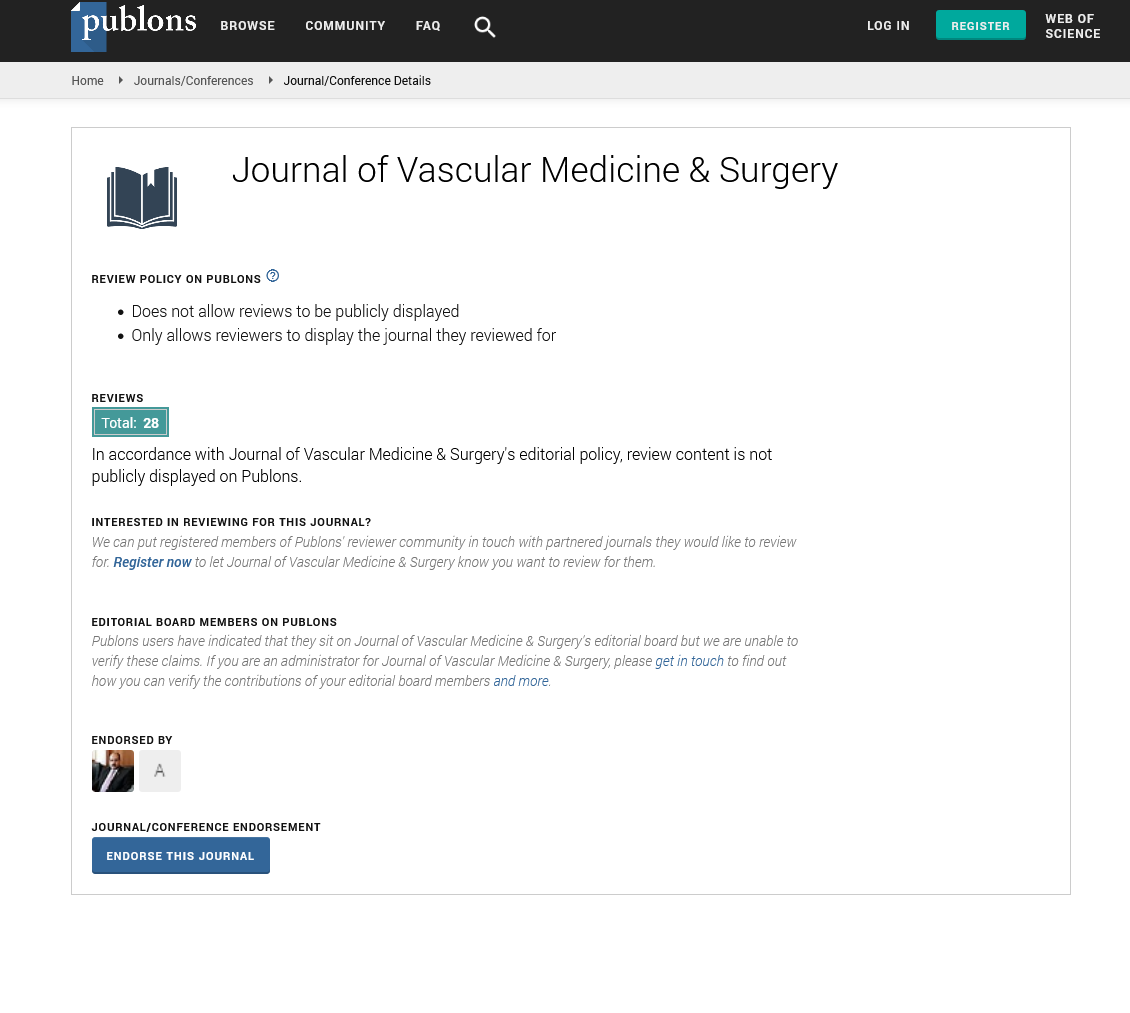Indexed In
- Open J Gate
- Academic Keys
- RefSeek
- Hamdard University
- EBSCO A-Z
- OCLC- WorldCat
- Publons
- Euro Pub
- Google Scholar
- SHERPA ROMEO
Useful Links
Share This Page
Journal Flyer

Open Access Journals
- Agri and Aquaculture
- Biochemistry
- Bioinformatics & Systems Biology
- Business & Management
- Chemistry
- Clinical Sciences
- Engineering
- Food & Nutrition
- General Science
- Genetics & Molecular Biology
- Immunology & Microbiology
- Medical Sciences
- Neuroscience & Psychology
- Nursing & Health Care
- Pharmaceutical Sciences
Perspective - (2025) Volume 13, Issue 5
Reimagining the Fontan Conduit: A Perspective on Partial Heart Transplantation for Single Ventricle Palliation
Lin YuReceived: 21-Apr-2025, Manuscript No. JVMS-25- 29210 ; Editor assigned: 23-Apr-2025, Pre QC No. JVMS-25- 29210 (PQ); Reviewed: 07-May-2025, QC No. JVMS-25- 29210 ; Revised: 14-May-2025, Manuscript No. JVMS-25- 29210 (R); Published: 21-May-2025, DOI: 10.35248/2329-6925.25.13.580
Description
The Fontan-Kreutzer procedure, now widely recognized as the final palliative step in the surgical management of single ventricle congenital heart defects, has transformed survival and quality of life for tens of thousands of children born with these complex anomalies. However, despite significant advancements in technique and postoperative care, the long-term consequences of Fontan physiology are sobering. As patients live longer, an increasing number experience debilitating complications collectively termed “Fontan failure” that stem from the very physiological alterations the surgery was designed to create.
Challenges in current Fontan physiology and design
The challenge lies in the intrinsic limitations of current Fontan designs. The total cavopulmonary connection, whether achieved via extracardiac conduits or lateral tunnels, results in a passive, nonpulsatile pulmonary circulation. This unique physiology is associated with chronically elevated systemic venous pressures, low cardiac output, and a host of downstream complications including liver fibrosis, protein-losing enteropathy, arrhythmias, and reduced exercise tolerance. Even more problematic is the use of static prosthetic materials that cannot adapt to a growing child, thereby necessitating future interventions and increasing the risk of thrombotic events and flow inefficiencies.
To break through the stagnation in conduit design, a radical rethinking is needed — one that draws from regenerative medicine and transplantation. A compelling, innovative solution is emerging: Partial Heart Transplantation (PHT), specifically transplantation of the donor right atrium and attached great veins to serve as a living, pulsatile extracardiac conduit.
Traditional extracardiac conduits
Traditional extracardiac conduits, typically fashioned from synthetic materials like Gore-Tex, are nonliving and fixed in diameter. These materials do not grow, require lifelong anticoagulation, and pose long-term risks of thrombosis or stenosis. Tissue-engineered grafts, while promising, have yet to demonstrate reliable growth potential or long-term functionality. Meanwhile, mechanical assist devices remain experimental, technically complex, and unsuitable for early-stage palliation.
Partial heart transplantation offers a uniquely biological solution that may overcome many of these issues. In this approach, a donor right atrium harvested with its attached superior and inferior vena cava could be fashioned into a tubular conduit and connected from the systemic venous return to the pulmonary arteries. This conduit, comprised entirely of native, vascularized cardiac tissue, has intrinsic pulsatility, endothelial lining, and the potential for growth and remodeling. These features are not merely theoretical. Unlike prosthetic materials, transplanted cardiac tissue retains cellular and biochemical mechanisms that allow adaptation to hemodynamic demands and somatic growth.
Additionally, the thromboresistant nature of living tissue may significantly reduce the need for lifelong anticoagulation. The presence of contractile atrial myocardium may restore a degree of pulmonary pulsatility, improving forward flow, reducing venous pressure, and potentially mitigating long-term complications like hepatic congestion and protein-losing enteropathy.
Importantly, the feasibility of partial heart transplantation is supported by the growing pool of donor hearts not suitable for full transplantation. Donor hearts with marginal ventricular function, for example, may still have viable atrial tissue. Likewise, domino procedures from recipients with morphologically normal hearts offer additional opportunities for tissue procurement.
The potential of partial heart transplantation extends beyond conduit replacement. With the introduction of a Cavoatrial Partial Heart Transplant (CAPHT) conduit, the concept of a subpulmonary assist “pump” becomes biologically feasible. In essence, this is a biologically active, self-powered flow enhancer rather than a passive channel. By preserving and pacing the contractile function of the donor atrial tissue, the CAPHT conduit could act as a subpulmonary booster, restoring energy to the Fontan circulation and reversing the passive flow that currently defines it.
Conclusion
The Fontan procedure remains a cornerstone of congenital heart surgery, but its limitations are clear and increasingly consequential. As more patients survive into adulthood, the field must innovate to address the chronic physiologic burden imposed by no pulsatile, fixed-diameter conduits. Partial heart transplantation particularly using the right atrium as a living Fontan conduit offers a bold and promising direction.
By harnessing the regenerative potential of biologic tissue and reintroducing pulsatility to the pulmonary circulation, CAPHT has the potential to significantly improve long-term outcomes for patients with single ventricle heart disease. This approach could mark the beginning of a new era in congenital heart surgery one where growth, adaptability, and physiologic support are no longer aspirations, but clinical realities.
Citation: : Yu L (2025). Reimagining the Fontan Conduit: A Perspective on Partial Heart Transplantation for Single Ventricle Palliation. J Vasc Surg. 13: 604
Copyright: © 2025 Yu L. This is an open-access article distributed under the terms of the Creative Commons Attribution License, which permits unrestricted use, distribution, and reproduction in any medium, provided the original author and source are credited.

